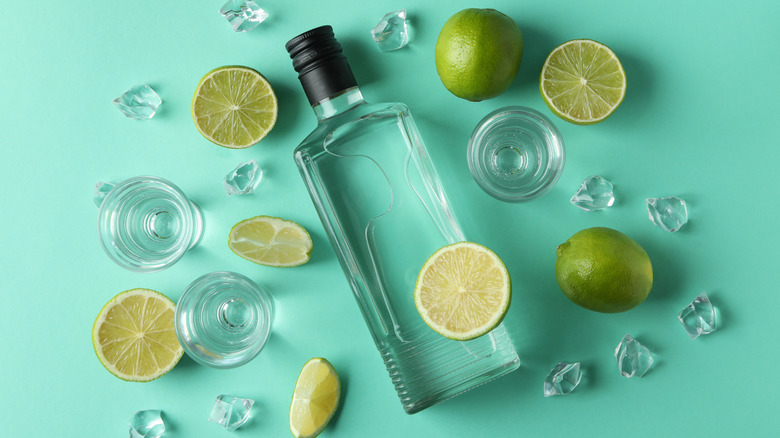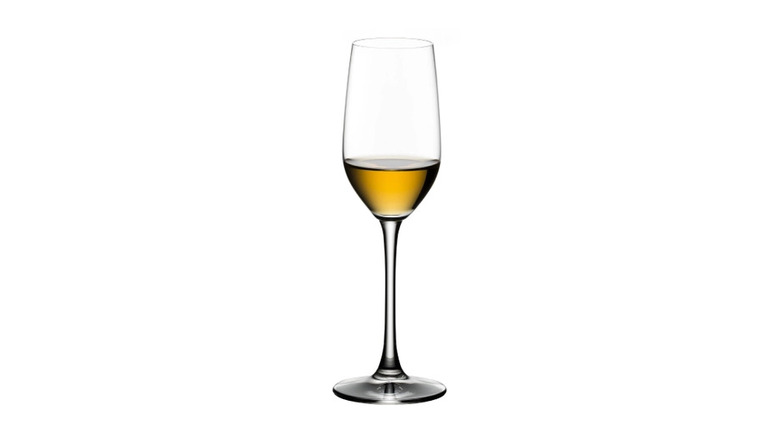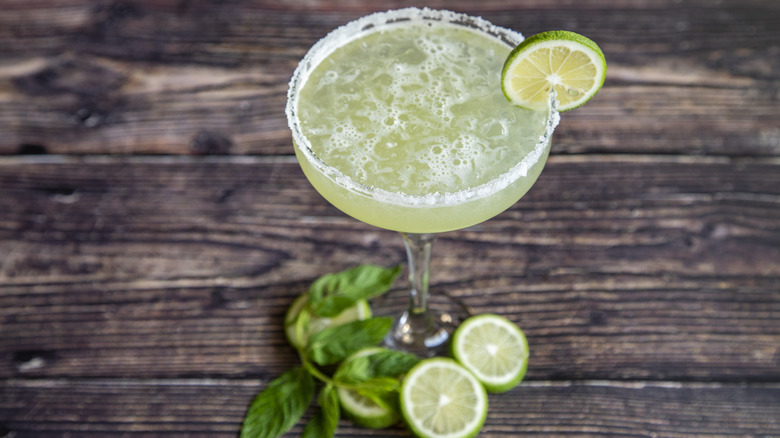The Hands-Down Best Type Of Glass For Tasting Tequila
When tequila aficionados sit down for a tasting, shot glasses do not make the cut. Rather, experts believe the proper glass for tasting tequila is a flute, similar to the one used for Champagne, prized for its ability to make bubbles fizz straight up.
There's no effervescence in tequila, of course, but the shape of flutes also plays a valuable role in preserving the character of this spirit. Notably, the flute's shape traps aromas in the upper part of the glass, allowing tasters to inhale the tequila's bouquet and identify its signature scents, from fruity and floral notes to spicy and herbaceous ones — all before taking the first sip. The fact that a flute is stemmed also matters, as it prevents tasters from inadvertently heating the tequila with their hands.
If this seems a bit pretentious and out of keeping with tequila's earthy roots in its ancestral home of Jalisco, Mexico, bear in mind that Mexico's Consejo Regulador del Tequila, the regulatory agency tasked with preserving the spirit's quality and promoting its traditional culture, has also backed the flute as the preferred tasting glass. The agency notes one flute in particular: the Riedel Ouverture crystal tequila glass, which was crafted specifically for tequila tasting.
Why the flute became the preferred glass for tequila
If you want to order tequila at the bar like an expert, it's important align your tastes with the premium producers of both spirits and glassware. The tequila market has been booming since 2004, as over the last two decades, the Mexican-made spirit has outpaced whiskey in sales, thanks to a rebranding as a premium sipper. In the near future, it's also projected to overtake vodka as the best-selling liquor in the world by 2026.
Just as premium tequila brands are excelling in the marketplace, so too is premium glassware in which to appreciate them. The Riedel Ouverture crystal tequila flute has been available since 2001, and was specifically crafted based on the recommendations of tequila producers. The Riedel version is slightly different from the traditional Champagne flute, the latter of which features a narrowing effect at the top to conserve bubbles.
Instead, the tequila flute, like the brandy snifter (which is also preferred to the shot glass) provides more room in the glass for the tequila to be exposed to air. Significantly more in the case of the flutes, which can hold about four times more tequila than a typical shot glass. Rather than filling the flute, however, the tequila should be swirled, so that its flavors are softened and enhanced, and its bouquet held captive in the glass.
Tasting tequila like an expert
Finding the right glass is the first step in properly appreciating fine tequila. The flute is the preferred vessel, of course, but you'll also want the tequila served at room temperature (ideally, 69 degrees Fahrenheit). Avoid ice, as chilling these premium sippers actually masks, or mutes, their more delicate flavors. As with wine, you'll want to swirl and nose the tequila before you taste it. Swirling oxygenates the tequila, and helps to release its many flavors and aromas.
If you're tasting multiple brands, drink them according to style, beginning with the lightest, referred to as blanco (or unaged), and then progressing to older, more darkly colored reposado and añejo tequilas. Small sniffs and sips are the rule when enjoying tequila. Because of the alcohol content, it's easy to become overpowered by the aromas or to have your tongue become numb due to overlong gulps. Take a breath before you sip, and another while you're savoring the complex flavors.
Of course, if you want to appreciate your tequila not simply for its own merits, but its ability to blend with other ingredients in an iconic cocktail like the margarita, then the flute is no longer the right vessel. Use dedicated margarita glasses but opt for the crystal variety to better appreciate more nuanced flavors. And don't forget to give it a good, hard shake before serving.



